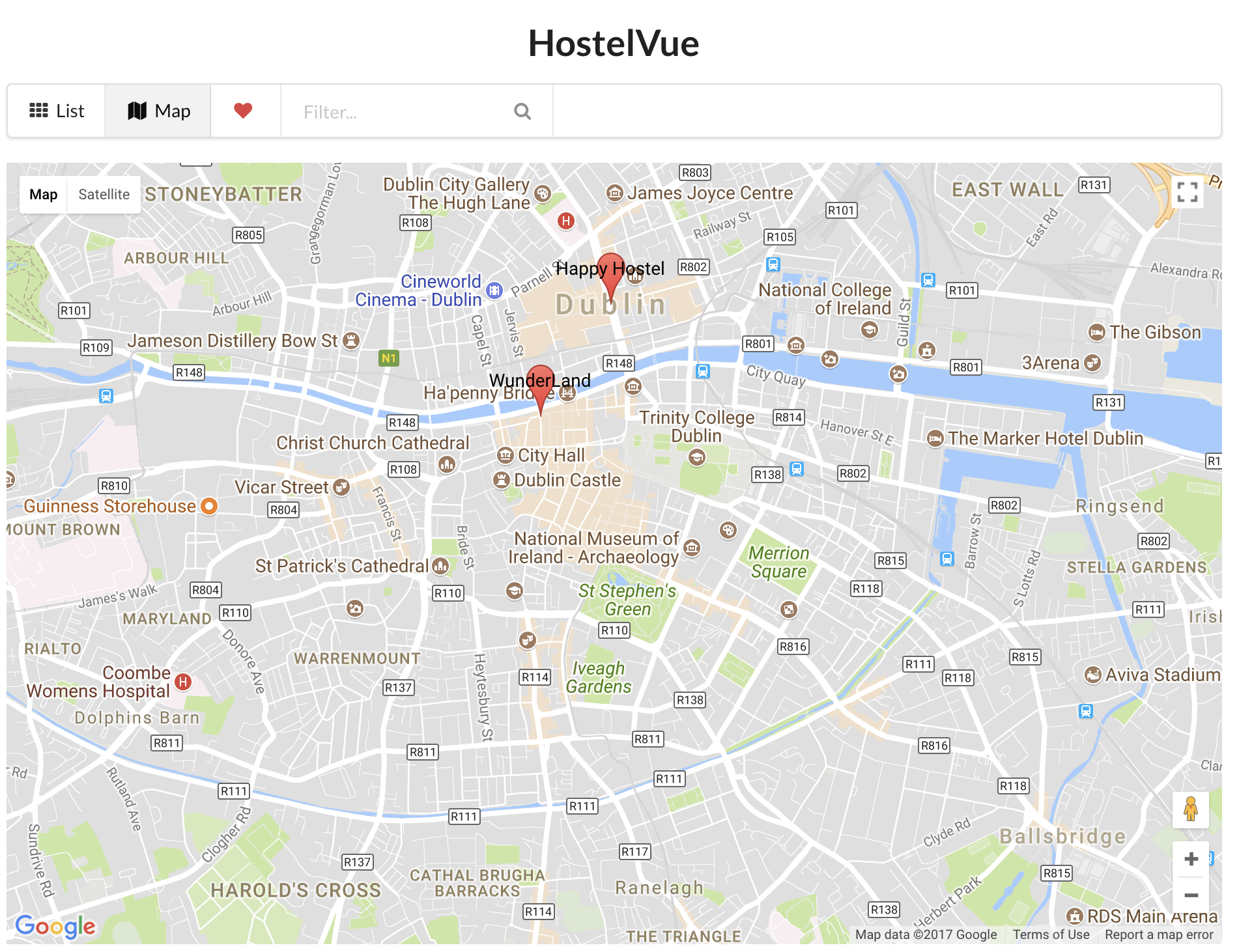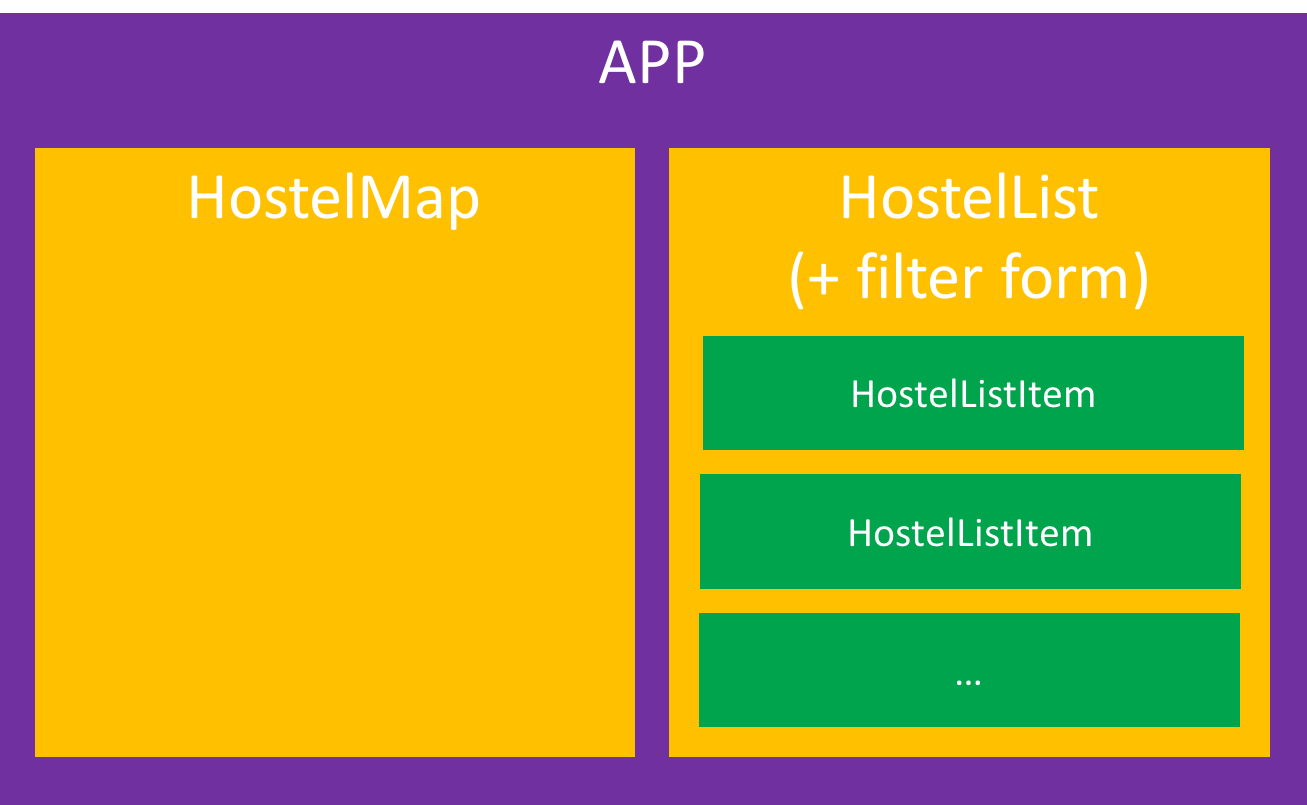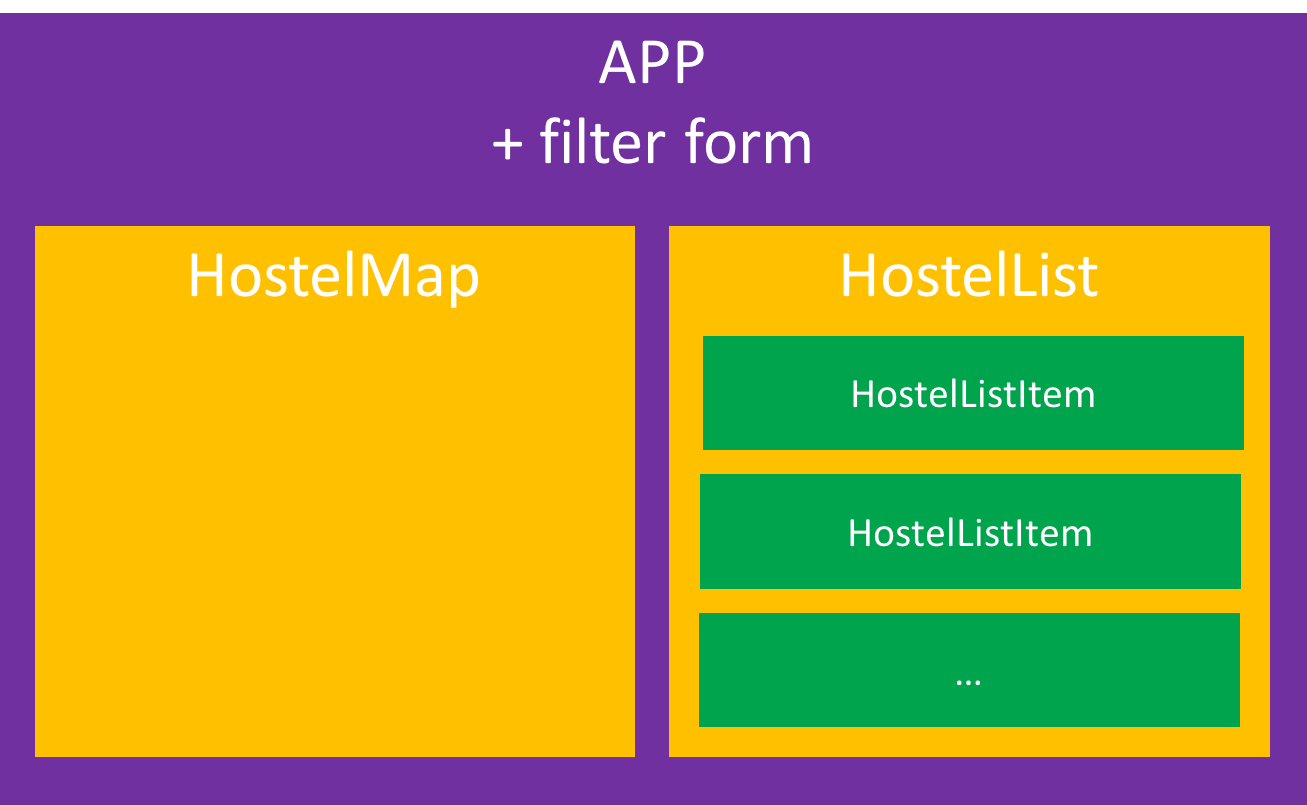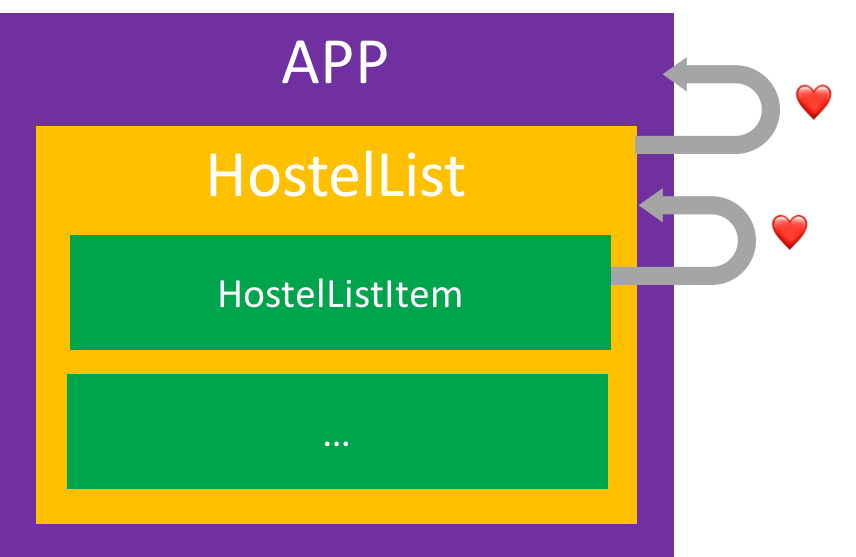Part 5: Routing
Our final goal is to create something like this:

Step 1: setup routing
You can install vue-router like the following:
npm install vue-router
Then let's configure our first route:
// router/index.js
import Vue from 'vue'
import Router from 'vue-router'
import HostelList from '@/components/HostelList'
Vue.use(Router)
export default new Router({
routes: [
{
path: '/',
redirect: '/list'
}, {
path: '/list',
name: 'List',
component: HostelList
}
]
})
In the main.js, add the router to the Vue instance:
// main.js
new Vue({
el: '#app',
router,
template: '<App/>',
components: { App }
})
Step 2: create a new representation of hostels
We now want to see where the hostels are on the map.
The global overview should look like this:

We're going to use Google Map API.
- Add this script at the end of index.html
<script async defer src="https://maps.googleapis.com/maps/api/js?key=AIzaSyCtvfPKi-BxCcfl6drliPs-grwK2CSa_iU"></script> Create a new component:
HostelMap.vue:<template> <div id="map" class="map ui container"> </div> </template> <script> /* global google */ /* eslint no-new: "off" */ export default { props: ['hostels'], data () { return { map: {}, markers: [] } }, methods: { createMarker (hostel) { return new google.maps.Marker({ position: { lat: hostel.coords.lat, lng: hostel.coords.lon }, map: this.map, label: hostel.name, data: hostel }) } }, watch: { hostels () { this.markers.forEach(marker => { marker.setMap(null) }) this.hostels.forEach(hostel => { const marker = this.markers.find(m => m.data === hostel) if (typeof marker === 'undefined') { this.markers.push(this.createMarker(hostel)) } else { marker.setMap(this.map) } }) } }, mounted () { const DUBLIN = { lat: 53.34, lng: -6.26 } this.map = new google.maps.Map(document.getElementById('map'), { zoom: 14, center: DUBLIN }) this.hostels.forEach((hostel) => { this.markers.push(this.createMarker(hostel)) }) } } </script> <style scoped> .map { height: 600px; } </style>Add one new route
- Adapt the templates
<!-- how to render the menu --> <div class="ui two item menu"> <router-link to="/list" class="item" active-class="active"><i class="grid layout icon"></i> List</router-link> <router-link to="/map" class="item" active-class="active"><i class="map icon"></i> Map</router-link> </div> <!-- don't forget to pass a property hostel to subcomponents --> <router-view :hostels="hostels">
Step 3: move filters on top
We now want to move the filter from HostelList.vue to his parent (App.vue).
So, HostelMap.vue can share the user filter (there is nothing to do on this file!).
The global overview should look like this:

==> todo give template of the menu
Did you see?
More intermediate components we add, more it's complicated to pass properties/events.

we should better manage the global state